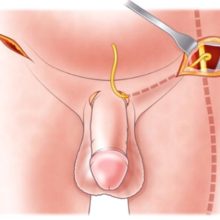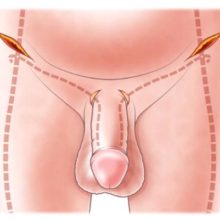Erectile Dysfunction or impotence is a common side effect following the treatment of prostate cancer by radical prostatectomy. Up to 70% of men who undergo this procedure become impotent and it doesn’t matter which way the procedure is done, be it Robotic, Laparoscopic or as an Open operation. With around 10,000 radical prostatectomies done in Australia each year approximately 7000 of these men will experience erectile dysfunction.
This is due to damage to the nerves that pass around the prostate to the penis that are responsible for erections. These nerves are very fine and damage results in impotence. There are 2 types of radical prostatectomy: 1) nerve sparing and 2) non-nerve sparing. Both result in impotence or erectile dysfunction but it is much more of a problem in the non-nerve sparing procedures.
At Southern Plastic Surgery we have introduced a new innovative minimally invasive procedure that in our recent study has an 80% success rate of restoring erectile function in men who have been impotent following Radical Prostatectomy.
This procedure involves using nerve grafts from the lower legs that are then used to bring a new nerve supply to the penis. Nerves grow at 1mm a day so there is a waiting time until the new nerves reach the penis but most men who have undergone this have noticed some changes in the 1st 6 months and those who have had restoration of erectile function noted this at around 12 months post nerve graft surgery.
The following criteria are what we look for to see if you are suitable for this surgery.
- Be aged younger than 70 years
- Have had satisfactory/normal erectile function prior to radical prostatectomy surgery
- Have PSA levels <0.1ng/ml in their most recent test following radical prostatectomy
- Have persistent impotence following radical prostatectomy despite using oral and/or injectable therapies
- Have had their radical prostatectomywithin 5 years
- Have no hormonal related conditions or diabetes
- Have not had radiotherapy to treat prostate cancer (external beam and/or brachytherapy)
- Have never taken androgen deprivation therapy
Below is a drawing on the left showing the nerve graft and the one on the right demonstrating the new supply to the penis.


The new innovative minimally invasive procedure was presented at the 18th Asia Pacific Prostate Cancer Conference 2017.